From ancient timber buildings to modern skyscrapers, China’s architecture reflects the country’s rich culture. The projects featured in this selection are carefully designed to work within historic contexts, accommodating or extending pre-existing structures.
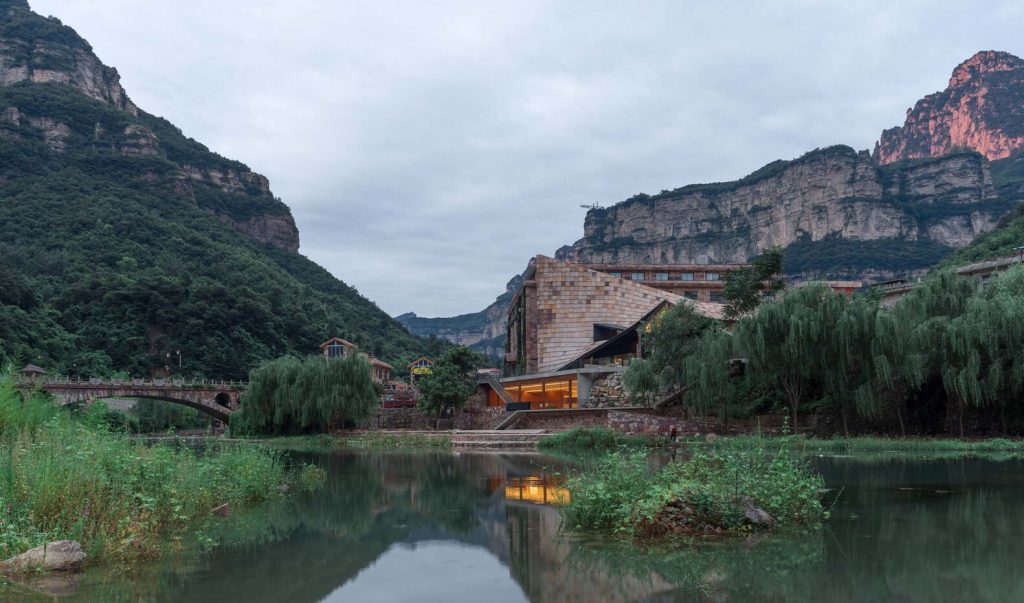
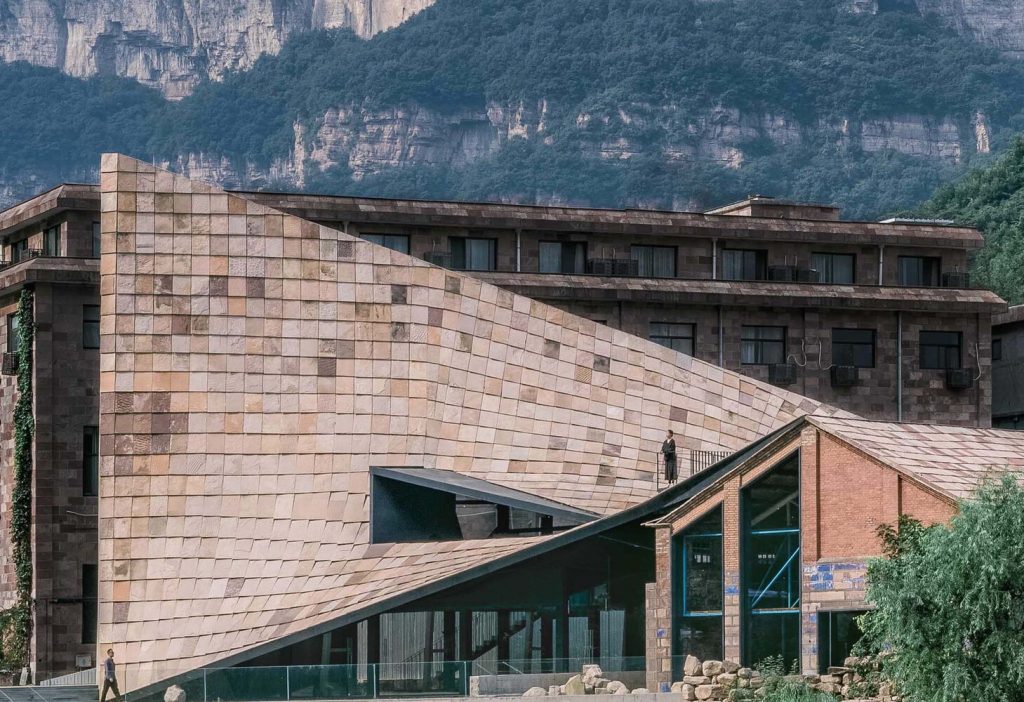
Taihang Xinyu Art Museum by Wang Chong Studio (via archdaily; also header image)
Local practice Wang Chong Studio has created a new building for Designing Taihang Xinyu Art Museum in China’s Henan Province around the existing warehouse to reflect heritage, identity and the background of the region.
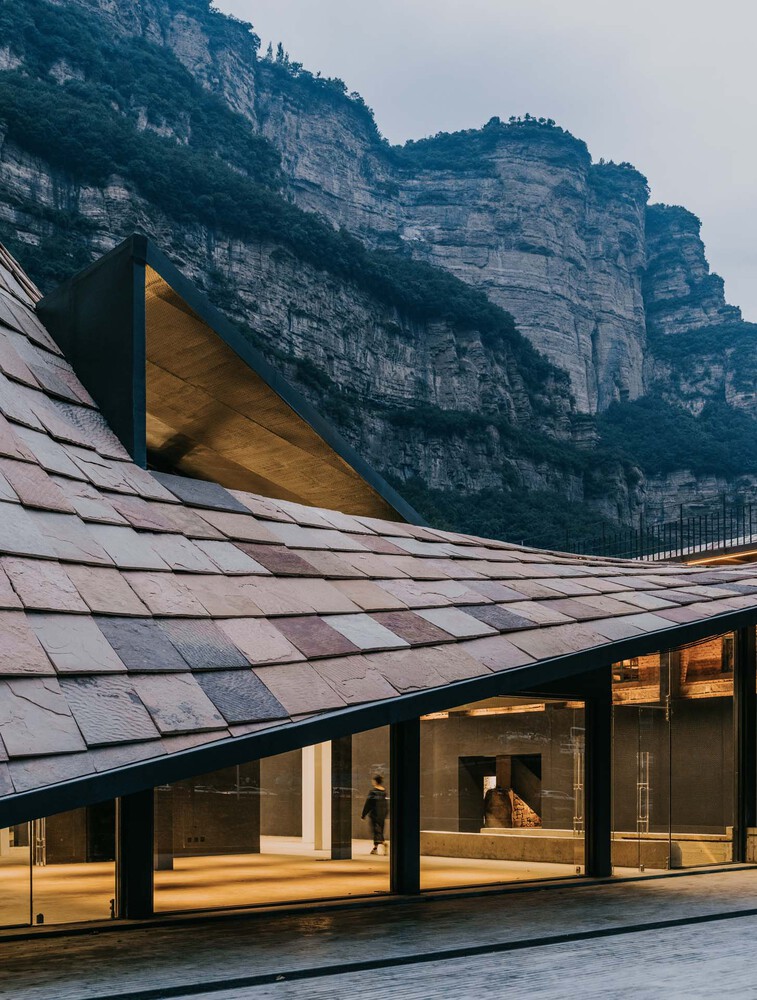
Taihang Xinyu Art Museum by Wang Chong Studio (via archdaily)
The form of the building was inspired by its mountain surroundings. The team topped the new building with a sculptural tiled sloping roof. Designed to appear to grow out of the rocky landscape, it draws inspiration from the Chinese-style large roof. In ancient Chinese architecture, the architects explain, the large roof is described as ‘like a bird spreading its wings and a pheasant spreading its wings and flying’, as if the wings bring a light feeling.
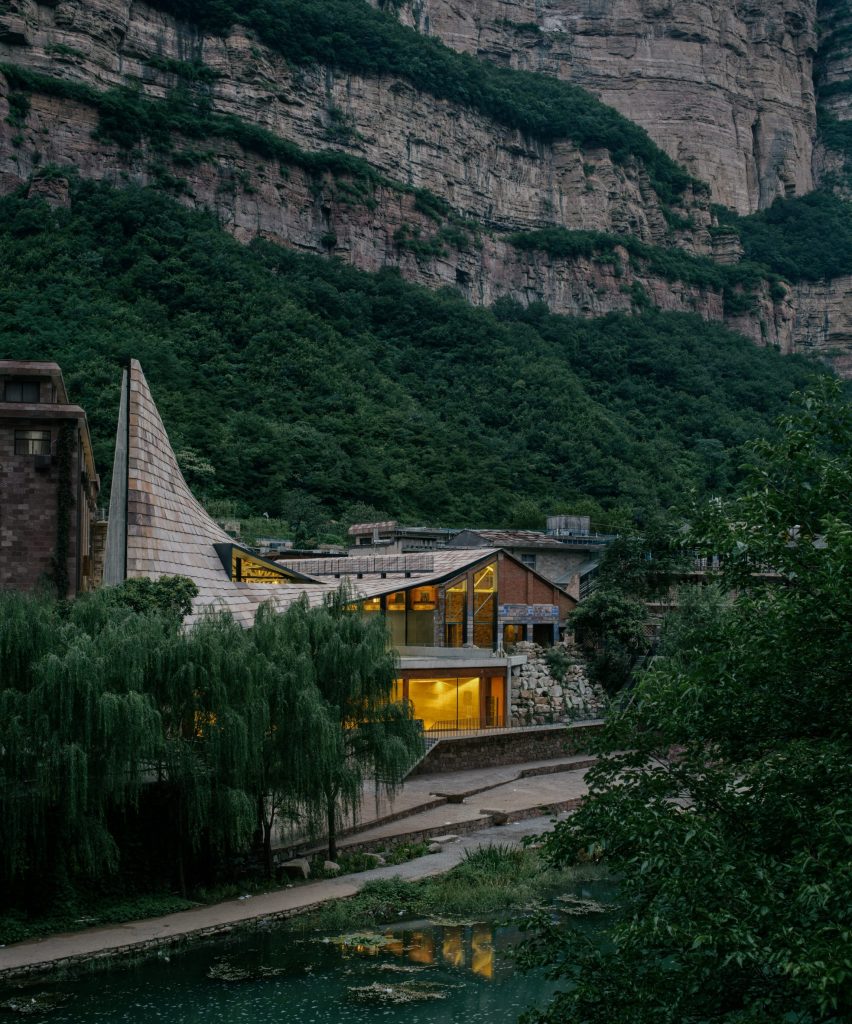
Taihang Xinyu Art Museum by Wang Chong Studio (via archdaily)
Angled to match the heights of the neighbouring buildings on either side of the structure, the roof forms large eaves, which the studio envisions as a sheltered space for art students and painters to sketch the views of the mountain.
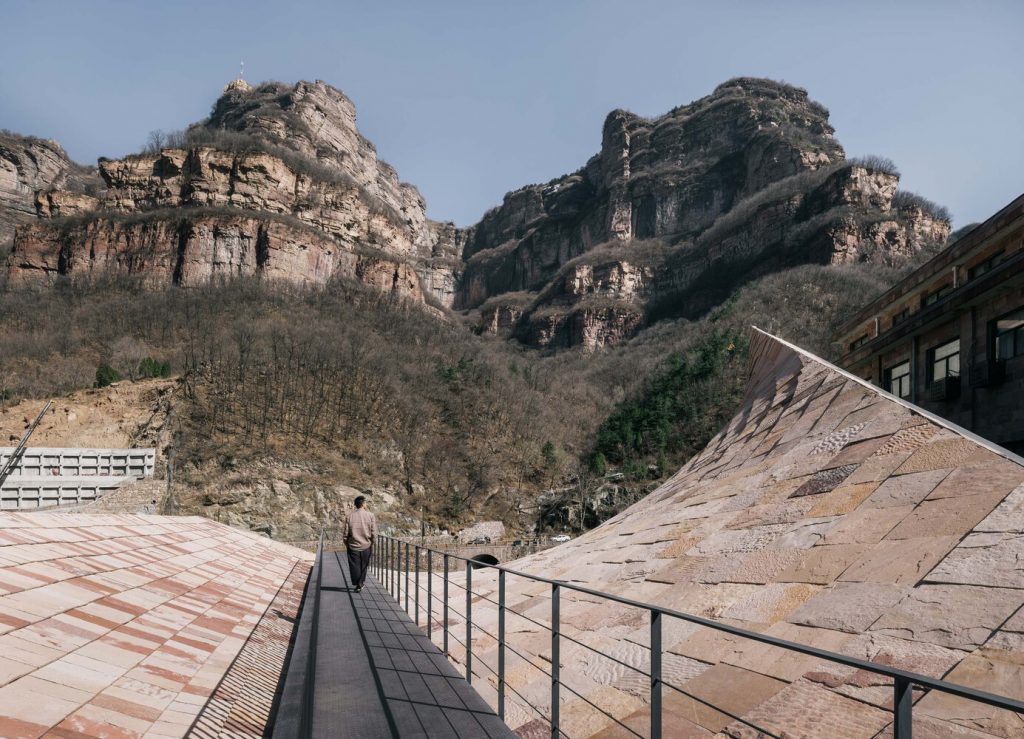
Taihang Xinyu Art Museum by Wang Chong Studio (via archdaily)
The building was created with great respect for the real quality of local natural materials. The architects used rugged rustic stone for the walls and added large boulders discovered at the site during the excavation process.
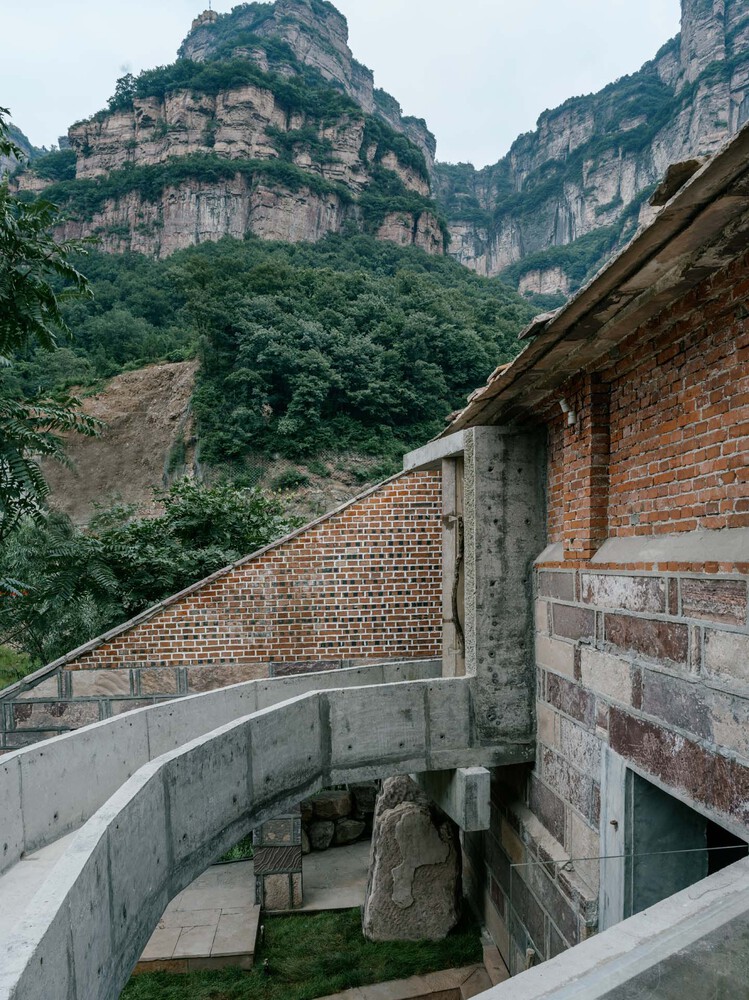
Taihang Xinyu Art Museum by Wang Chong Studio (via archdaily)
The building adopts the construction method of dry-hanging stone slabs, for which the team recycled a large number of old slate slabs that were used as roofing materials for traditional houses. Old craftsmen took part in much of the construction, thus embracing the local history of craftsmanship and respecting the authentic qualities of natural materials.
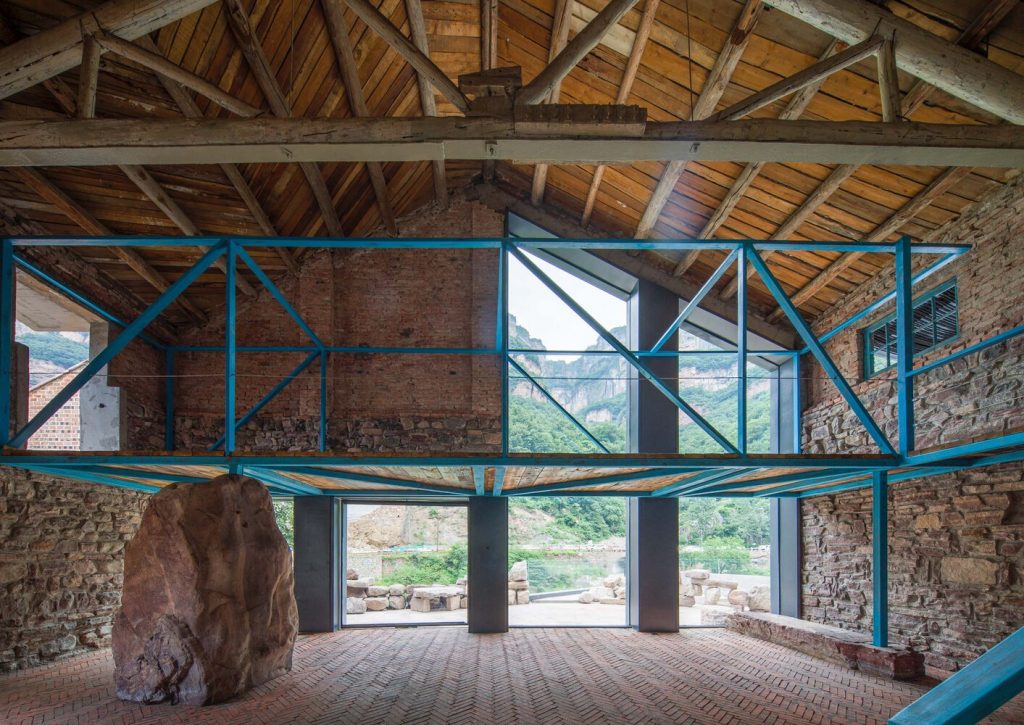
Taihang Xinyu Art Museum by Wang Chong Studio (via archdaily)
Inside, the galleries also feature existing elements from the site, including a large stone that was extracted from the riverside to support the steel structure of the mezzanine level in one exhibition space.
According to the founder of the studio Wang Chong, the design pays homage to traditional Chinese landscape paintings that try to describe the paths into the mountains layer by layer. This inspired the team to design layers of retreats and zigzag mountaineering paths in the site adjacent to the water and back of the mountain
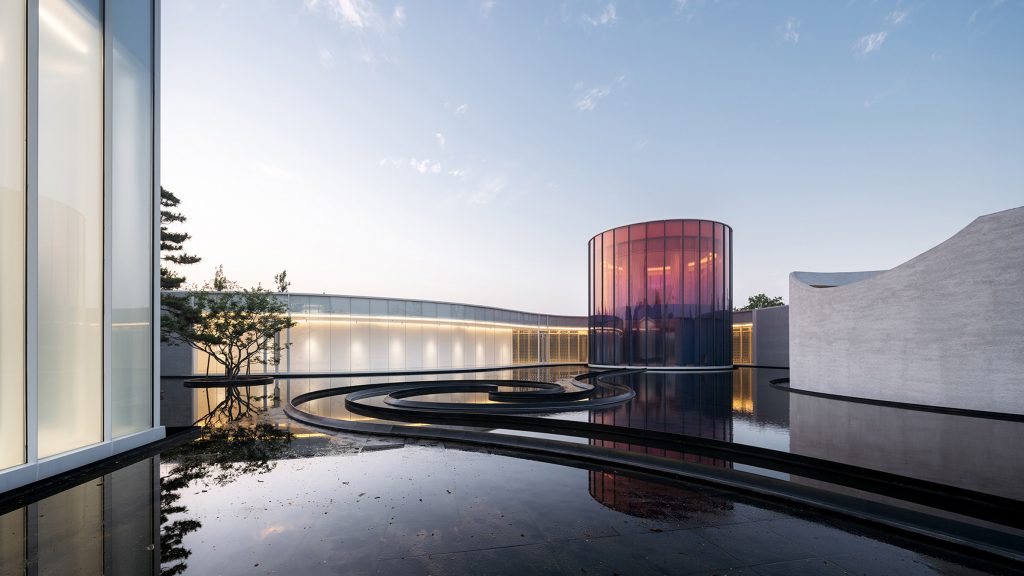
Monologue Art Museum by Wutopia Lab
Similarly, Shanghai architecture studio Wutopia Lab took cues from the inky brushstrokes of traditional Chinese paintings when designing a 1,300-square-metre cultural centre in Qinhuangdao for the Beijing-based property investment and development firm Sino-Ocean Group.
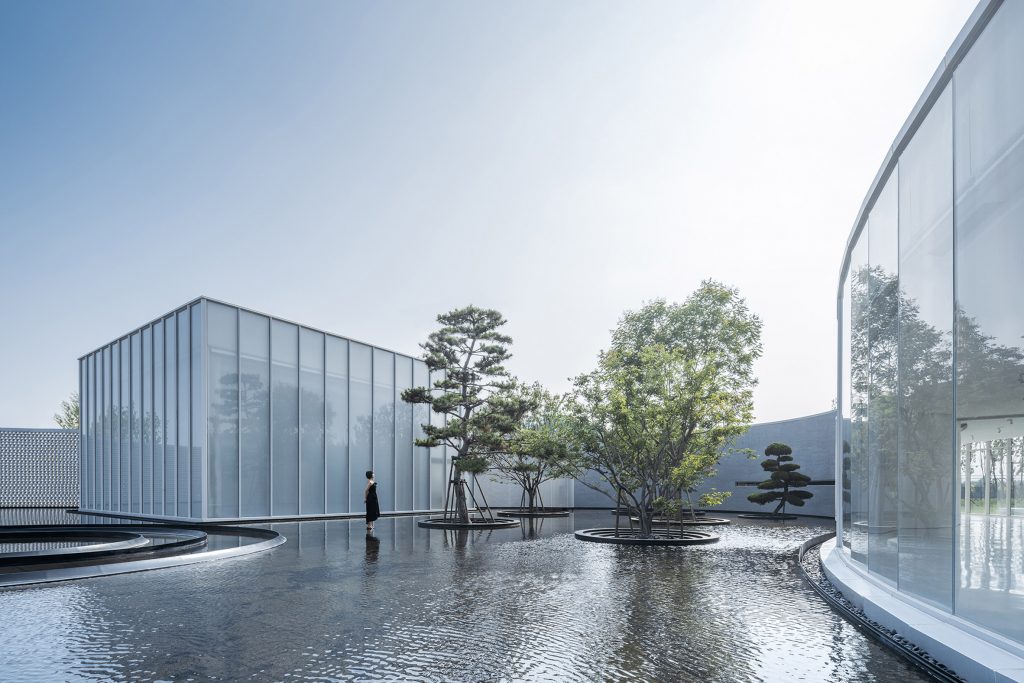
Monologue Art Museum by Wutopia Lab
Named Monologue Art Museum, the complex comprises an art gallery, a dance studio, a yoga room and a theatre. The various facilities are arranged as a sequence of independent elements connected by gently curving walls and corridors.
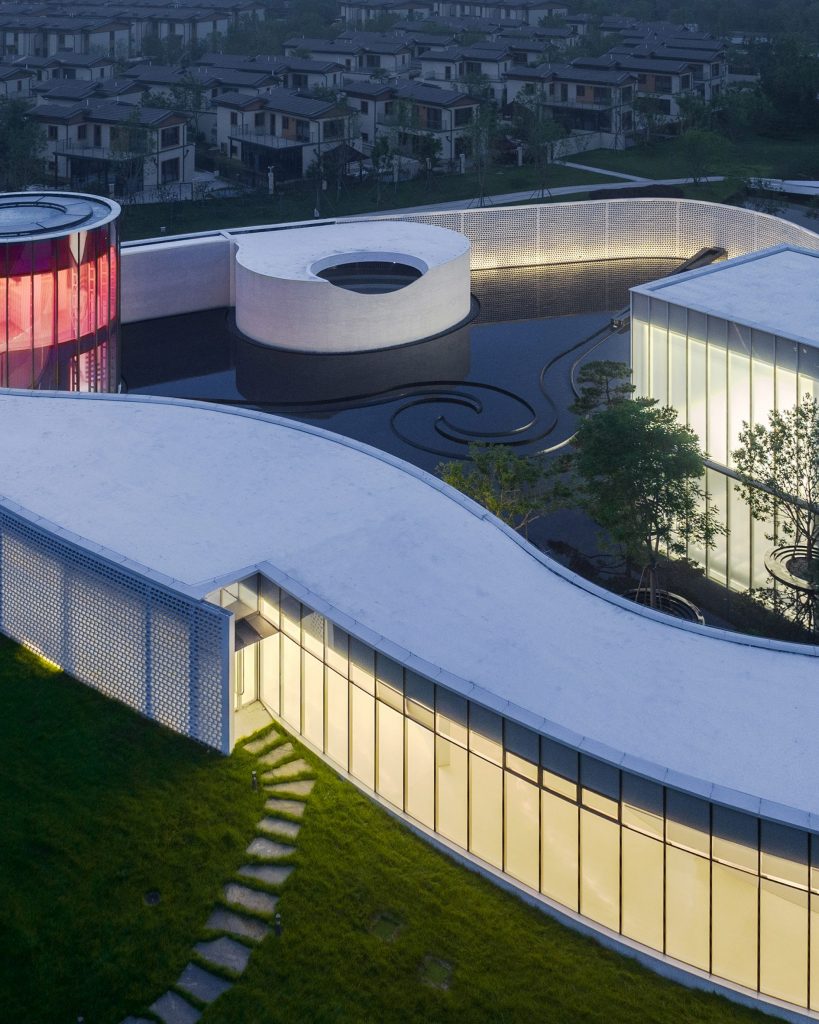
Monologue Art Museum by Wutopia Lab
The founder of the studio Yu Ting says the museum’s layout resembles “a slowly unfolding hand scroll” that begins with a small, circular auditorium, which functions as a foyer and a performance space and accommodates a circular stage positioned beneath a curving skylight that allows daylight to illuminate the interior.
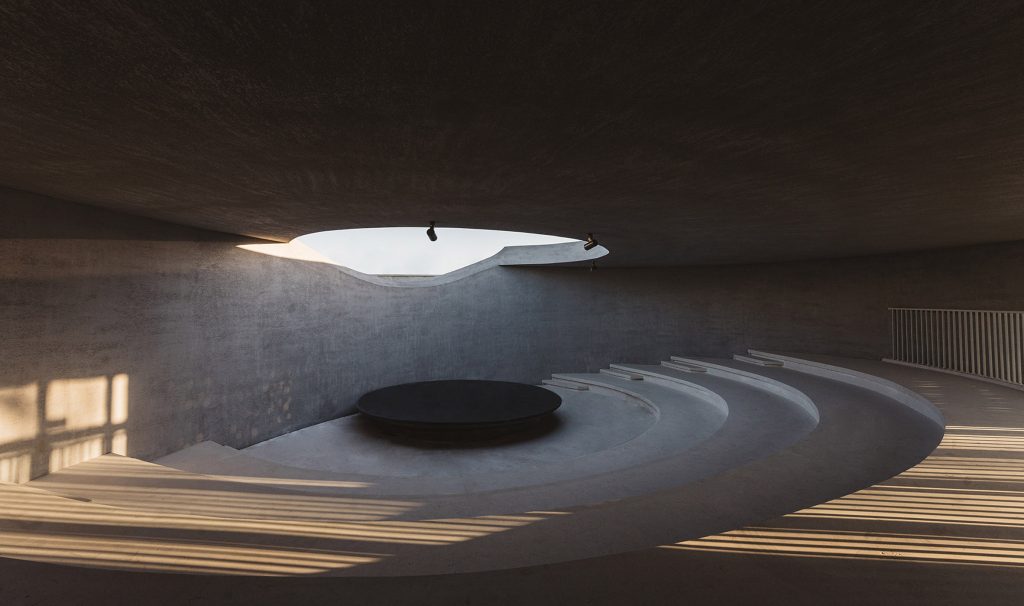
Monologue Art Museum by Wutopia Lab
Just like brushstrokes, the museum’s perimeter varies in thickness along its length, with narrower areas forming corridors that widen to accommodate spaces including the art gallery and a tearoom. A corridor lined with glazing provides a view of the shallow reflecting pool at the centre of the complex. The water feature complex incorporates a sinuous flowing channel, which pours out from a fountain towards the centre of the courtyard.
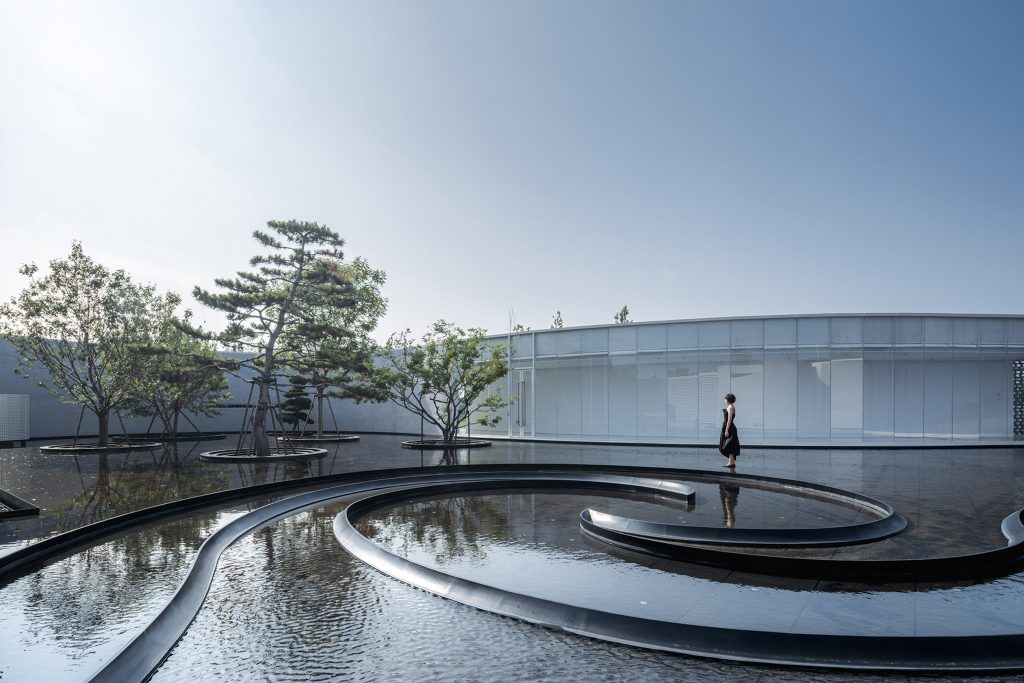
Monologue Art Museum by Wutopia Lab
Six trees that emerge from the water alongside the dance studio reference a landscape painting called Six Gentlemen by the Yuan dynasty artist Ni Zan, of which Ting is a fan.
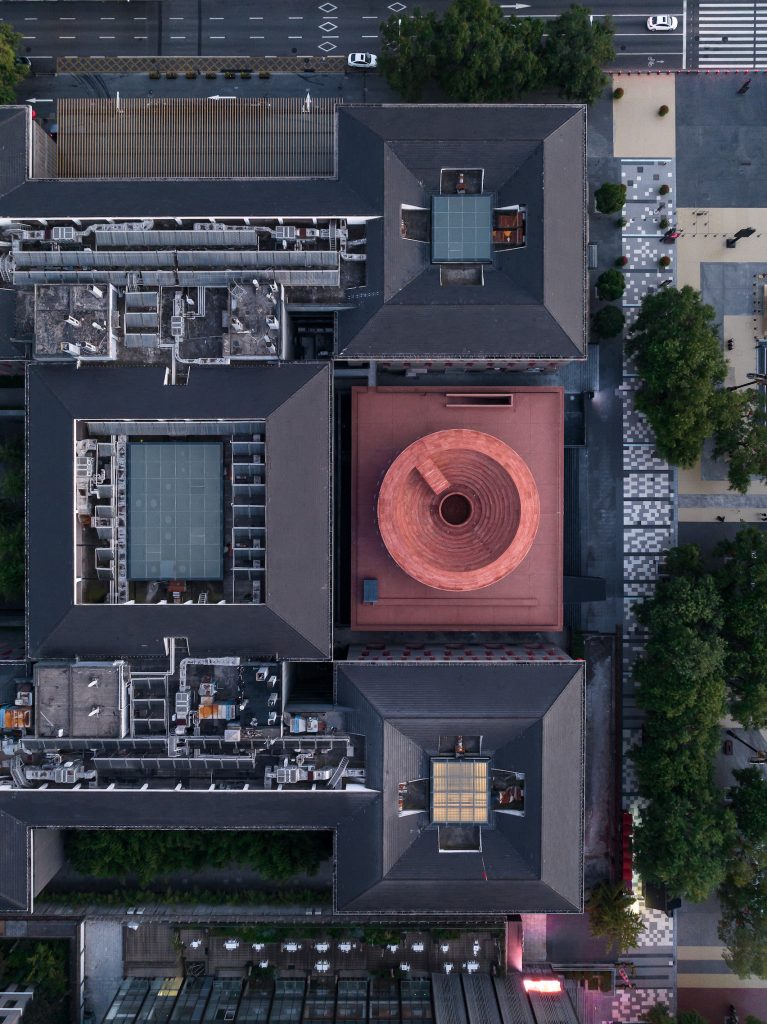
Qujiang Museum of Fine Arts by Neri&Hu
Chinese architecture studio Neri&Hu was invited to create a new extension for the east entry of the Qujiang Museum of Fine Arts, which is located south of the Giant Wild Goose Pagoda in Xi’an. The resulting 1,990-square-metre building is topped by a circular bowl-shaped amphitheater that was informed by the concept of a glowing lantern.
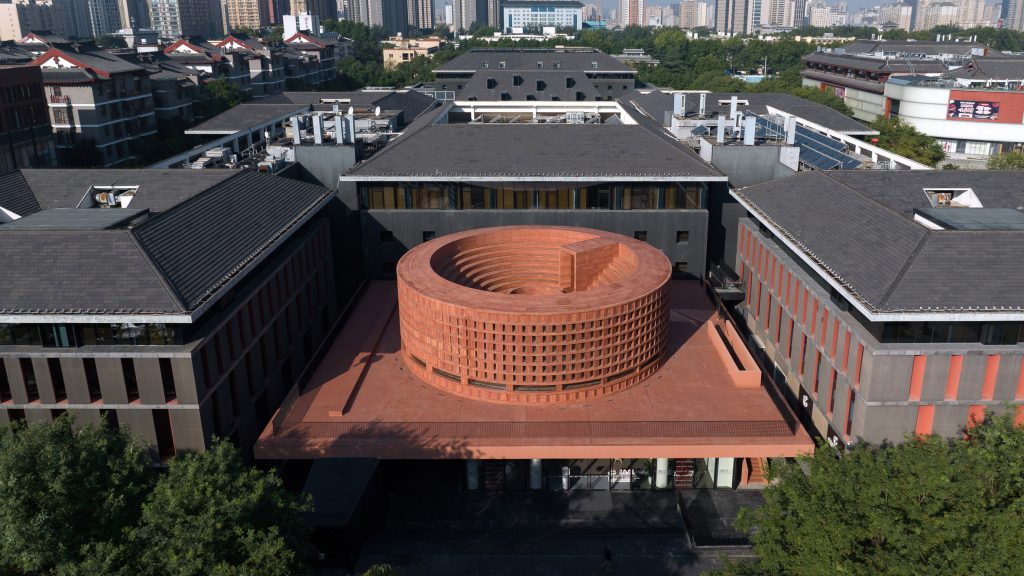
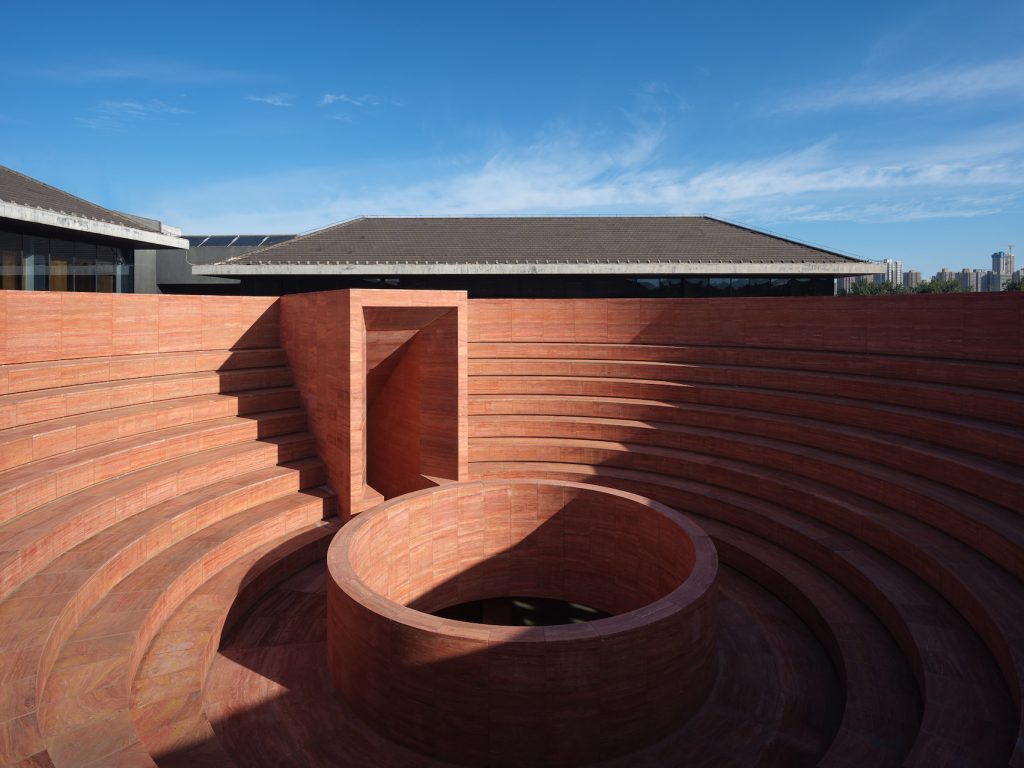
Qujiang Museum of Fine Arts by Neri&Hu
The exterior of the structure that can be used for both public activities and private events is comprised of diamond-shaped red travertine masonry units. A circular walkway encloses the bottom of the amphitheater, while a lightwell at the centre of the building connects all three floors of the new extension.
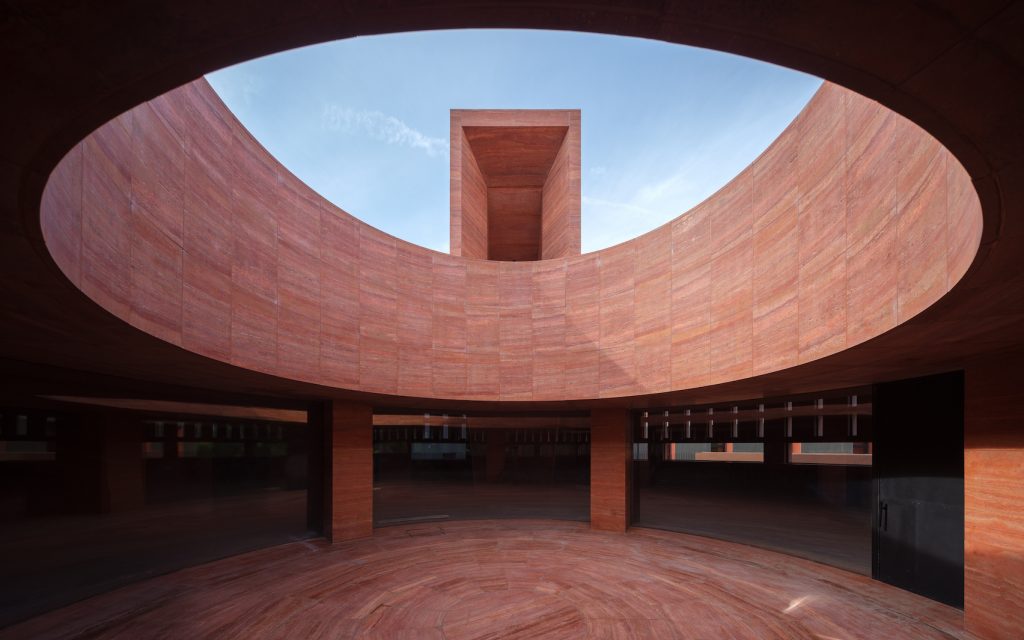
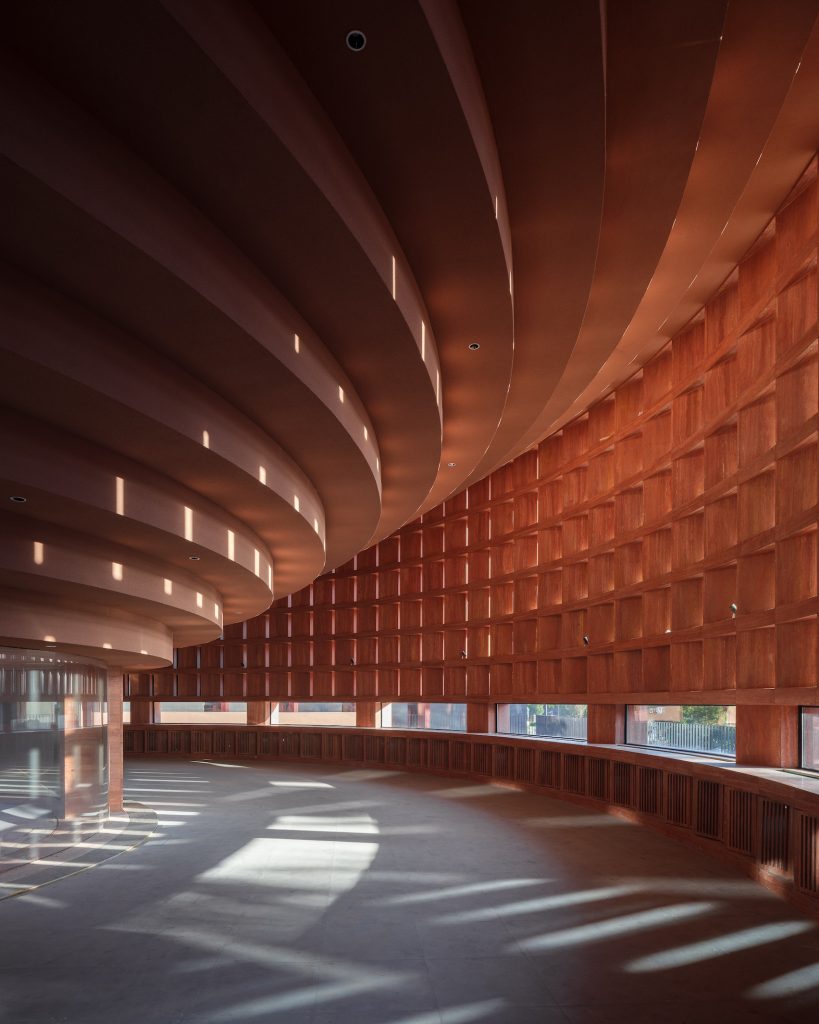
Qujiang Museum of Fine Arts by Neri&Hu
The base of the addition that is finished with cast-in-place concrete houses underground museum spaces and a restaurant, as well as newly added retail spaces and public restrooms located on a ground-level sunken plaza. Visitors can either access the sunken plaza via the wide steps at the front of the building, which were kept from the original site, or via a series of escalators hidden within a sculptural form on the side that connect directly to the underground museum.